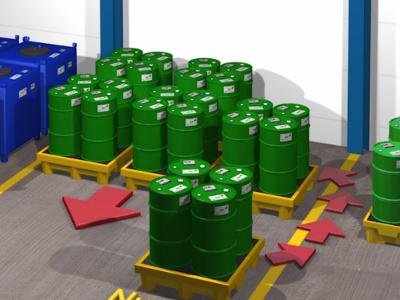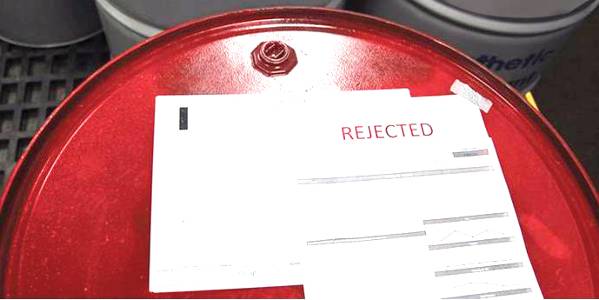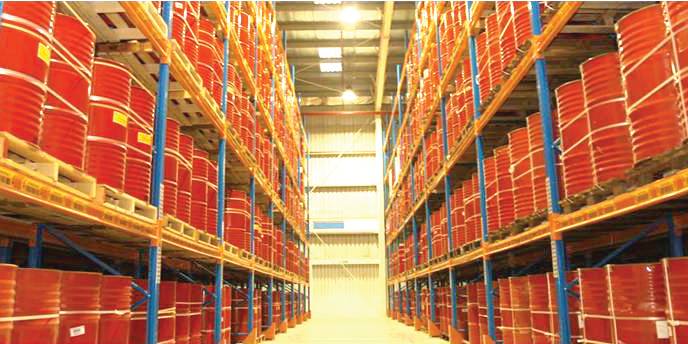5 Top Things you Should Expect from your Lubricant Supplier
Lubricant suppliers are among the vital stakeholders in your reliability excellence program. When we think about choosing a supplier, there are two things that come in mind, cost and performance. Though these are important, but these are not the only things that users need to focus on. The reason we procure a lubricant is not just to run the machine but also to reduce friction and wear so that asset life can be increased. In order to achieve these goals, emphasis should be given on selection of your lubricant supplier. This article discusses about the top five things that your supplier should consider providing you, apart from the cost and performance benefits.
1. Fresh Inventory
Will you buy a medicine which is about to expire in a month or the one which has longer expiry period? Obviously you will choose the latter one. Same is applicable for lubricants also. Lubricants also have its expiry date, called shelf life. Shelf life is a key consideration in proper inventory-management practices for packaged lubricating oils and greases. It ensures that it is suitable for use and delivering performance as promised in the intended applications. Like bread, milk and medicine your lubricant also starts degrading over a period of time. Unfortunately, it does not behave like wine.

Old inventory may have several problems. Over a period of time, inappropriate storage may lead to settling of additives, excessive oil bleeding in grease, contaminants might get inside your drum, and extreme temperatures will act as a catalyst for lubricant degradation. Level of degradation will vary based on different storage conditions. Imagine if you put these degraded lubricants in your machine, they are likely to do more harm than good.
To avoid getting old and degraded lubricant from supplier end, it is better to mention in the Purchase Order (PO) that supplied lubricant should be blended within six month from the date of delivery. Interestingly, it has been observed that sometimes old inventory is supplied at a discounted price. Fresh inventory will always have lesser contamination and better chances of performing well. To avoid use of old and degraded lubricant at your end, implement strict First in First out (FIFO) at you facility.
Shelf life can be verified on the top of the pack. Supplier usually mentions the date / week of manufacturing. Some manufacturers also use codification system for blending date and plant information, which the buyer should be able to interpret.
 2. Quality Certificate
2. Quality Certificate
Quality certificate tells you about the basic properties of the newly blended lubricant. Lubricant deliveries should always be accompanied by quality certificates for each lot. It can be either in the form of a hard copy or a soft copy. There should be no hesitation in asking for quality certificate from the lubricant supplier as it is not an element of distrust but a For oils, generally quality parameters like Viscosity, Viscosity Index, Flashpoint, Acid / Base Number, Cleanliness etc, are mentioned in the quality certificate. For grease, Dropping Point, NLGI Class, Base Oil Viscosity etc, are included in the test certificate. The certificate is mostly batch wise.
 3. Lubricant Analysis & Interpretation Service
3. Lubricant Analysis & Interpretation Service
You often get welcome drink once you check into a hotel, so how about getting complimentary oil analysis from your lubricant suppliers?
Some of the lube manufacturers do provide oil analysis and diagnostics to enhance maintenance programs. They offer oil analysis and assist maintenance professionals in the early detection of lubrication problems and in predicting future machine reliability. They will be able to test their brand of lubricant with basic properties like Viscosity, Viscosity Index, Moisture, Elemental Analysis, Acid Number, Base Number etc. The idea of this analysis is not be to replace commercial Oil Analysis (OA) labs but to cross check the test results given by commercial oil analysis labs. However, for less critical machines, OA results provided by the lubricant supplier can be used to take maintenance decisions.
 4. Validation of Supplier’s Storage Practices
4. Validation of Supplier’s Storage Practices
Lubricating oils and greases are formulated to satisfy specific kinds of service. Sometimes suppliers follow inadequate storage practices. Just like a refrigerated medicine loses its properties as it cannot be restored if it gets exposed to high/ abnormal temperature. Similarly, lubricant loses its property as well. Common causes of lubricant contamination, deterioration, and wastages in storage and handling includes— exposure to dust or chemical fumes, poor outdoor storage practices, moisture, exposure to excessive heat or cold etc. The Idea of validating the supplier’s storage practices is to ensure that your lubricants are treated well before they reach you.
5. Technical Expertise
Your lubricant supplier must have competent, preferably certified, Technical Support Engineer (TSE). TSE guides or recommends a particular product for your application and troubleshoots in case you find something abnormal in the lubricant. They should also guide you in creating awareness, providing training and seminars and performing regular lubrication audit. They can also assist you in lubricant consolidation.
Conclusion
Selection of a good lubricant supplier is important, as it is closely linked to your reliability program. Hence price of the lubricant should not be the only guiding principle in the selection of the supplier. The five top parameters discussed in this article should also form the basis of selection. If proper attention is given to the selection of the Lube supplier, then it will pay rich dividends in the long run through bottom line savings.
“Apart from the obvious, low cost and high performance lubricants, there are many other important things that users need to seek from their lubricant supplier.”
